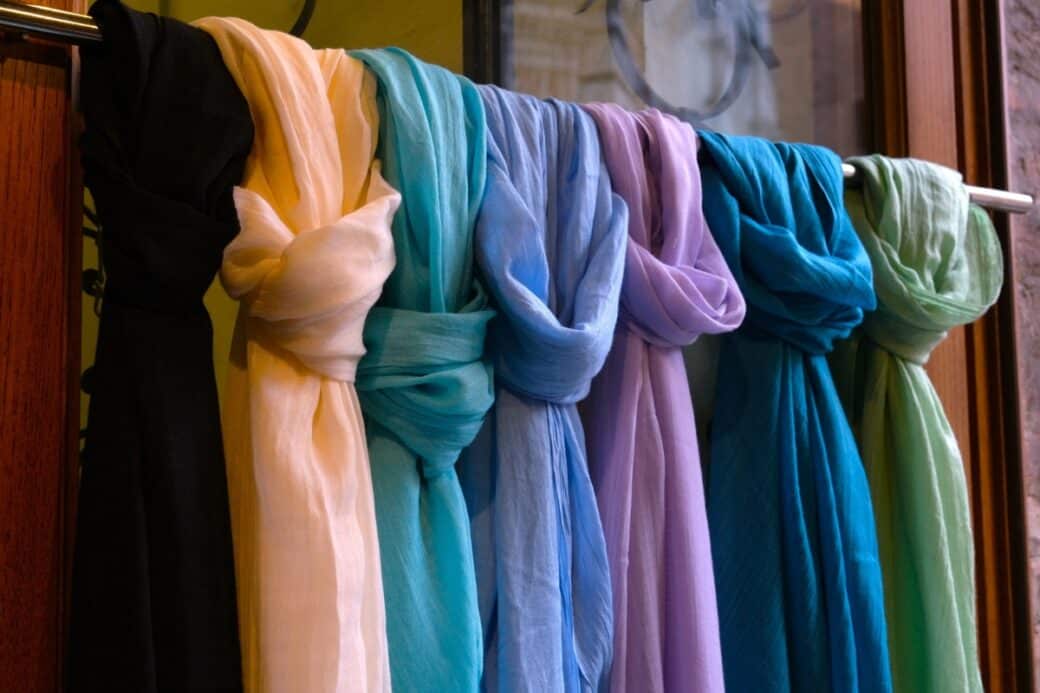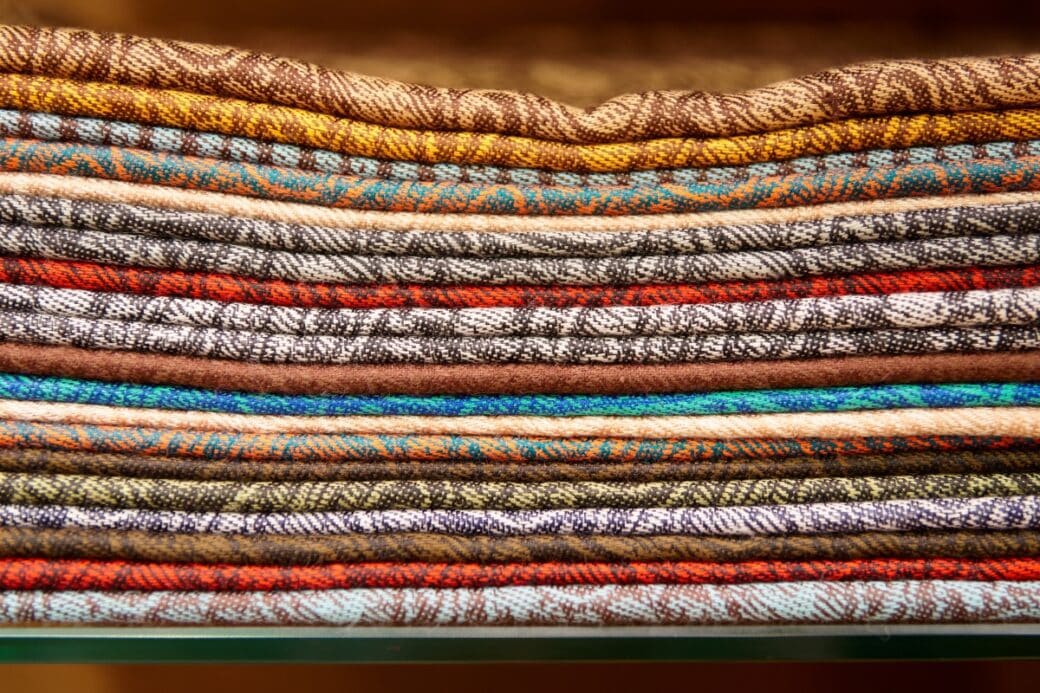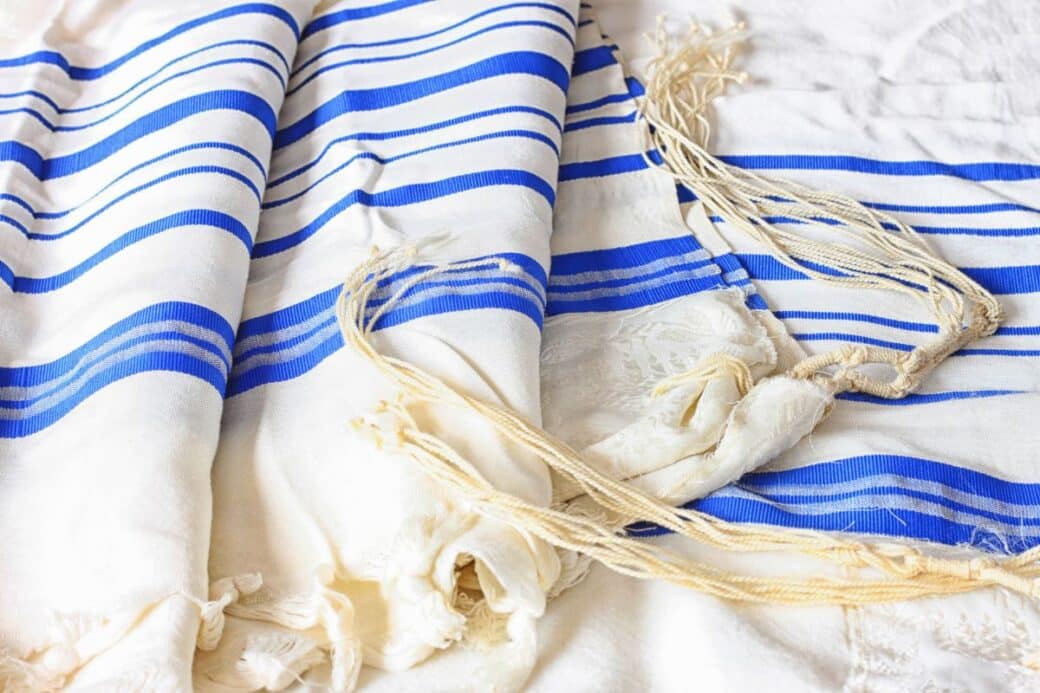Are you searching for the perfect size for a prayer shawl? Look no further! In this article, we will explore the dimensions that make a prayer shawl truly special. Whether you are making it for yourself or as a thoughtful gift, finding the right size can make all the difference. So, join us on this journey as we unravel the secrets behind the perfect prayer shawl dimensions.

Prayer Shawl Dimensions: Understanding the Purpose of a Prayer Shawl
A prayer shawl, also known as a tallit or a prayer garment, is a significant piece of religious attire in various faith traditions. Its origins can be traced back to ancient times when people used shawls or cloths for various religious and spiritual practices. Prayer shawls hold deep symbolic meaning and play a vital role in the prayer experience for many individuals.
Origins and significance of prayer shawls
The origins of prayer shawls can be found in both the Jewish and Christian faiths. In Judaism, the tallit is a sacred garment worn during morning prayers, and its significance lies in the commandment to wear fringes on the corners of one’s garments, as stated in the Torah. The tallit serves as a visual reminder to observe the commandments and connect with God during prayer.
Similarly, in Christianity, prayer shawls are often used as a physical representation of faith, comfort, and protection. They serve as a reminder of God’s love and provide a sense of security during prayer and meditation. The act of wearing a prayer shawl signifies the individual’s devotion and commitment to their spiritual practice.
Variations of prayer shawls across religions
While the purpose of prayer shawls remains consistent across religions, there are variations in their design, use, and symbolism. In Judaism, the tallit is traditionally worn only by men during morning prayers and certain religious rituals, while women may also wear it in some progressive communities. Christian prayer shawls, on the other hand, are used by both men and women and are often gifted to individuals in times of need or as a symbol of support and comfort.
In addition to Judaism and Christianity, prayer shawls can be found in other faith traditions as well. Islamic prayer shawls, known as prayer rugs or prayer mats, are used during daily prayers as a clean and designated space for prayer. These prayer rugs are typically made of specific materials and feature intricate designs that hold cultural and religious significance.
Traditional use of prayer shawls
In traditional contexts, prayer shawls are used during religious ceremonies, such as morning prayers or special services. In Judaism, the tallit is worn by Jewish men during weekday morning prayers, Sabbath and holiday services, and certain life cycle events like bar mitzvahs and weddings. The tallit serves as a physical reminder of God’s presence and the obligations of Jewish law.
Christian prayer shawls are often used during times of personal prayer, meditation, or in communal worship settings. They can be draped around the shoulders or wrapped around the body, creating a cozy and sacred space for spiritual connection. Some individuals may also choose to use a prayer shawl as a tangible representation of their faith while engaging in acts of service or ministry.
Modern interpretations and uses
As spirituality evolves and religious practices adapt to contemporary contexts, the uses of prayer shawls have expanded beyond traditional settings. Today, prayer shawls are not only used within religious institutions but also by individuals in their personal prayer and meditation practices. People may choose to wear a prayer shawl during private moments of reflection, while engaging in mindfulness exercises, or simply to feel a sense of comfort and connection with their spiritual beliefs.
Furthermore, prayer shawls have become a meaningful and heartfelt gift to those in need or facing challenging times. When someone is experiencing illness, grief, or a difficult life transition, a prayer shawl can provide solace, support, and a tangible reminder that they are not alone. The act of giving a prayer shawl can be a powerful way to show compassion, empathy, and love for others.

Basic Dimensions of a Prayer Shawl
To understand prayer shawls fully, it is important to consider their basic dimensions. The size of a prayer shawl impacts its functionality, symbolism, and overall experience for the wearer. Here are the key factors to consider when it comes to the dimensions of a prayer shawl.
Types of prayer shawls
Prayer shawls come in various forms, each serving a unique purpose within different religious traditions. These include the tallit in Judaism, prominent in Mitzvah Tallit, and the prayer shawl in Christianity. Islamic prayer rugs and mats also serve as a type of prayer shawl, though they differ in design and dimensions. Understanding the specific type of prayer shawl you are considering will inform your choices regarding its size.
Length and width of a typical prayer shawl
The length and width of a prayer shawl vary depending on the tradition and personal preferences. A typical prayer shawl can range from 60 to 80 inches in length and 20 to 30 inches in width. However, these measurements can differ significantly based on cultural, religious, and individual factors. It is important to consult specific guidelines or practices within your faith tradition to determine the appropriate length and width for your prayer shawl.
Comparing dimensions across types of prayer shawls
While the dimensions of prayer shawls can differ, certain commonalities can be observed across different faith traditions. For instance, both Jewish tallits and Christian prayer shawls are typically rectangular in shape, though the Tallit Katan, a smaller version of the tallit, is more square-like. Islamic prayer rugs, on the other hand, come in various shapes and sizes, with rectangular and square being the most common.
Understanding the size spectrum
With the wide range of sizes available for prayer shawls, it is important to understand the size spectrum and how it relates to individual needs and preferences. Some individuals may prefer larger prayer shawls that provide more coverage and envelopment, while others may opt for smaller, more compact shawls that offer ease of mobility and portability. The size spectrum allows for customization based on personal comfort, religious practices, and cultural traditions.
Importance of Size in Prayer Shawls
The size of a prayer shawl holds significant meaning and can greatly impact the overall prayer experience. Understanding the role of size in comfort, symbolism, cultural mandates, and personal preferences is crucial when selecting or creating a prayer shawl.

Role of size in comfort and wrapping
The size of a prayer shawl directly affects its comfort and wrapping capabilities. A shawl that is too small may restrict movement and hinder the ability to wrap oneself fully, potentially disrupting the flow of prayer. On the other hand, a shawl that is too large may feel cumbersome and impede ease of use or cause discomfort during prolonged wear. Finding the right balance between size and comfort is essential to create an optimal prayer experience.
Symbolism attached to prayer shawl’s dimensions
In many religious traditions, the dimensions of a prayer shawl carry symbolic significance. The length of the shawl can represent a connection with the divine or evoke a sense of grounding and protection. The width may symbolize the breadth and depth of one’s faith or the embracing and enveloping nature of divine love. These symbolic associations vary across different faiths and can be a personal interpretation as well.
Cultural or religious mandates on size
Certain religious traditions may have specific mandates or guidelines regarding the size of prayer shawls. For example, Orthodox Jewish communities often follow specific measurements for tallits, ensuring adherence to religious laws and customs. Similarly, other faith traditions may have established norms or recommendations for prayer shawl dimensions. It is essential to be aware of and respect these cultural and religious expectations when selecting or creating a prayer shawl.
Effects of size on prayer experience
The size of a prayer shawl can significantly impact an individual’s prayer experience. A well-fitted and appropriately sized shawl can enhance focus, deepen connection, and create a sense of sacred space. Conversely, an ill-fitting or impractical shawl may distract from the prayer experience and hinder one’s ability to fully engage in contemplative practices. Considering the effects of size on the prayer experience allows for intentional selection or creation of a prayer shawl that best supports spiritual connection and growth.
Choosing the Right Dimensions for Your Prayer Shawl
When it comes to selecting the dimensions for your prayer shawl, personal preferences, practical considerations, and cultural or religious factors all play a role. Here are some key factors to consider when choosing the right dimensions for your prayer shawl.
Personal preferences in size
Your personal preferences and comfort should guide the selection of your prayer shawl’s dimensions. Consider the level of coverage you desire, whether you prefer a more snug or loose fit, and how the size will impact your ability to move and wrap the shawl around yourself during prayer. Take into account any physical limitations or preferences that may affect your comfort, such as length or width restrictions.
Factors to consider when selecting dimensions
In addition to personal preferences, certain factors should be considered to ensure the practicality and functionality of your prayer shawl. Think about the specific religious or cultural context in which you will be using your shawl, any guidelines or recommendations within your faith tradition, and the intended purpose of the shawl. Additionally, consider the climate in which you live, as a thicker or longer shawl may be more suitable in colder regions.
Choosing width and length based on your body size
Your body size and proportions can inform the width and length of your prayer shawl. A petite individual may prefer a narrower and shorter shawl, while someone taller or broader may opt for wider and longer dimensions. The goal is to choose dimensions that provide sufficient coverage while ensuring comfort and ease of use. Measuring your body and experimenting with different sizes can help determine the ideal dimensions for you.
Balancing comfort and functionality
Finding the right balance between size, comfort, and functionality is crucial. Consider the activities you plan to engage in while wearing your prayer shawl and how the dimensions may impact your freedom of movement. It is important to choose a size that allows for ease of wear, enables proper wrapping or draping, and enhances your overall prayer experience. Striking a balance between comfort and functionality will ensure that your prayer shawl becomes an invaluable tool for your spiritual practice.

Variations in Dimensions for Different Prayer Traditions
While there are commonalities in prayer shawl dimensions, variations exist across different religious traditions. Here are some insights into the dimensions and sizes associated with different prayer shawls.
Comparison of dimensions across religions
Comparing prayer shawl dimensions across religions reveals both similarities and differences. For example, Jewish tallits tend to be larger in size, with lengths ranging from 72 to 80 inches and widths from 20 to 30 inches. Christian prayer shawls may vary in size, often falling within the range of 60 to 80 inches in length and 20 to 30 inches in width. Islamic prayer rugs can range widely in size, from small mats suitable for personal prayer to larger rugs used for communal worship.
Significance of size in Christian prayer shawls
In Christian prayer shawls, there is often greater flexibility in size due to the variety of uses and interpretations. The size of a Christian prayer shawl can be influenced by personal preference, practicality, and the intention behind its use. Some Christian congregations may have guidelines or recommendations regarding size, while others value individual creativity and expression in the selection of dimensions.
Special dimensions for Jewish Tallits
Jewish tallits typically have specific dimensions due to religious and cultural mandates. Orthodox Jewish tradition often requires a tallit to be made from a rectangular piece of fabric, measuring 72 to 80 inches in length and 20 to 30 inches in width. However, there may be variations in length based on personal height or customs within specific Jewish communities. The size and display of tzitzit, the fringes on the corners of the tallit, may also align with specific measurements.
Patterns in Islamic prayer shawls
Islamic prayer rugs, while not shawls in the traditional sense, are a form of prayer covering. These rugs often come in rectangular or square shapes with varying dimensions. Smaller prayer mats designed for individual use may be around 24 x 48 inches, while larger rugs for communal prayer may measure up to 4 x 6 feet. The design and complexity of the patterns on Islamic prayer rugs often have cultural significance and can vary across different regions and traditions.
Influence of Material on Prayer Shawl Size
Apart from dimensions, the material of a prayer shawl also affects its size, weight, and overall experience. Considering the influence of material is crucial when selecting or creating a prayer shawl that is both comfortable and functional.
How material affects the weight and size
Different materials have varying weights and properties, which can impact the overall size and feel of a prayer shawl. For example, a prayer shawl made from lightweight and breathable fabric may offer ease of movement and a lighter feel, particularly in warmer climates. On the other hand, a prayer shawl made from a heavier fabric may provide added warmth and a more substantial presence during prayer.
Choosing the right material for comfort and utility
The choice of material for your prayer shawl should prioritize both comfort and utility. Consider factors such as breathability, softness, durability, and ease of care. Natural fibers like cotton, linen, and silk are popular choices for their softness and breathability, while wool offers warmth and a traditional feel. Synthetic materials can provide additional durability and ease of maintenance. Finding the right balance between comfort and utility will ensure that the chosen material enhances your prayer experience.
Understanding adjustments in size based on material
Certain materials may have different draping properties or behaviors, which could affect the size and appearance of a prayer shawl. Elasticity or fabric stretch can influence how the shawl lies on the body and adapts to different wrapping styles. Consider how the material may affect the dimensions and adjust accordingly to achieve the desired fit and look of your prayer shawl.
Popular materials for prayer shawls
Prayer shawls can be crafted from a variety of materials, each with its own characteristics and benefits. Cotton is a common choice, known for its softness and breathability. Linen offers a lightweight and durable option that improves with use. Silk lends an elegant and smooth touch, while wool provides warmth and has deep historical and symbolic connections. Synthetic materials such as acrylic or polyester blends are also widely used due to their affordability and easy care. Assessing your specific needs and preferences can guide you in selecting the ideal material for your prayer shawl.

Creating Your Own Prayer Shawl: Sizing Guide
Creating your own prayer shawl allows for customization and a personal touch. Here is a sizing guide to help you in the process of crafting your unique prayer shawl.
Pattern selection and its impact on size
When selecting a pattern for your prayer shawl, consider how it may influence the overall dimensions. Patterns with intricate details or textures may alter the size and draping properties of the shawl. Pay attention to the recommended measurements provided in the pattern and ensure that they align with your desired dimensions.
Calculating the dimensions for your prayer shawl
To calculate the dimensions for your prayer shawl, start by determining the desired length and width. Consider your personal preferences, cultural or religious expectations, and the intended purpose of the shawl. Begin by measuring sample shawls that you find comfortable or follow the guidelines provided by your faith traditions. Adjust the measurements as necessary to suit your needs and creative vision.
Knitting or crocheting to the preferred size
Whether knitting or crocheting your prayer shawl, ensure that you follow the pattern or stitch instructions accurately, paying attention to gauge and tension. Adjustments may be necessary to achieve the desired size, so periodically measure and compare your work with the intended dimensions to ensure consistency throughout the creation process. Remember that different stitches or stitch combinations can affect the overall size and appearance of your prayer shawl.
Adjusting dimensions during the creation process
If, during the creation process, you realize that the dimensions are not aligning with your preferences, you have the flexibility to adjust your approach. You can modify the stitch pattern, increase or decrease the number of rows or rounds, or change the hook or needle size to achieve the desired size. Keep in mind that altering the dimensions may impact the overall look and feel of the shawl, so make adjustments gradually and thoughtfully.
Common Mistakes in Determining Prayer Shawl Dimensions
When determining the dimensions of a prayer shawl, it is essential to avoid certain common mistakes. Paying attention to these potential pitfalls will ensure that your prayer shawl meets your needs and expectations.
Mistaking prayer shawl dimensions for regular shawls
One common mistake is assuming that the dimensions of a prayer shawl are the same as those of regular shawls or garments. Prayer shawls often have specific guidelines or traditions associated with their size, making them unique and distinct from other types of shawls. Be sure to familiarize yourself with the appropriate dimensions for a prayer shawl within your faith tradition to avoid any misunderstandings.
Oversizing or undersizing prayer shawls
Another mistake is oversizing or undersizing a prayer shawl. A shawl that is too large may be challenging to manage during prayer or meditation, while one that is too small may not provide adequate coverage or comfort. It is important to find the right balance between size, functionality, and personal preferences to create a prayer shawl that fulfills its intended purpose.
Ignoring the impact of material on size
Neglecting to consider the impact of material choice on size is another common oversight. Different types of fabric can drape differently, affecting the overall dimensions and appearance of the shawl. When selecting your material, be mindful of its weight, stretch, and potential for shrinkage or expansion. Adjusting your dimensions accordingly will ensure that the final prayer shawl meets your expectations.
Not considering the user’s body size
For prayer shawls that are intended for personal use, it is important to consider the user’s body size when determining the dimensions. A shawl that is appropriate for one person may not fit another comfortably. Taking into account the body size and proportions of the intended recipient will help ensure that the prayer shawl provides optimal coverage and alignment with their personal needs and preferences.
Correcting the Size of an Existing Prayer Shawl
If you find that an existing prayer shawl does not meet your size requirements, there are ways to correct the dimensions. Consider the following options for adjusting the size of a prayer shawl.
Ways to adjust the length and width
To adjust the length of a prayer shawl, you can add or remove rows or stitches depending on your desired outcome. Similarly, you can increase or decrease the width of the shawl by adjusting stitch counts or adding or subtracting pattern repeats. Carefully assess the existing dimensions and plan your modifications accordingly to achieve the desired size.
When to consider resizing
Resizing a prayer shawl may be necessary if the shawl is uncomfortably oversized or lacks sufficient coverage. If the shawl feels too heavy or restrictive, it might be an indicator that resizing is necessary. Additionally, if the dimensions do not align with the guidelines or expectations within your faith tradition, resizing may be appropriate to ensure compliance and respect for cultural or religious practices.
Implications of adjusting the size of a prayer shawl
Adjusting the size of a prayer shawl may have implications beyond the dimensions themselves. Changes in length or width can affect the overall appearance, weight, and drape of the shawl. Careful consideration of these implications is necessary to ensure that the adjustments align with your intended vision for the prayer shawl.
Consulting experts for reshaping
If you are unsure about how to go about adjusting the size of a prayer shawl, it may be beneficial to consult with experienced knitters, crocheters, or individuals within your faith community who have knowledge about prayer shawls. They can offer guidance, suggestions, or practical advice on resizing the shawl effectively and efficiently.
Caring for Your Prayer Shawl: Tips for Maintaining Dimensions
To preserve the dimensions of your prayer shawl and ensure its durability, proper care and maintenance are crucial. Follow these tips to maintain the size and integrity of your prayer shawl.
Proper storage to retain size
When not in use, store your prayer shawl in a clean and dry environment to prevent it from stretching or shrinking. Folding or rolling the shawl carefully can help maintain its dimensions and minimize creasing. Consider using a storage bag or box to protect it from dust, pests, or accidental damage.
Cleaning and handling to avoid warping
Follow the care instructions specific to the material of your prayer shawl to prevent warping or distortion. Be cautious when washing or handling the shawl, as rough treatment or improper washing techniques may cause the fabric to stretch or shrink. Gently hand wash or use a delicate cycle with mild detergent and cold water, then air dry or use low heat if necessary. Avoid excessive wringing or twisting to maintain the size and shape of the shawl.
Understanding impact of wear and tear on size
Over time, wear and tear can affect the size and overall appearance of your prayer shawl. Regularly inspect the shawl for any signs of damage, such as fraying edges or loose threads, and address them promptly to prevent further deterioration. If necessary, reinforce or repair areas that may have stretched or shrunk through use.
How to restore original dimensions if shawl is stretched or shrunk
If your prayer shawl stretches or shrinks beyond its original dimensions, there are steps you can take to restore its size. For stretching, wetting the shawl and allowing it to dry flat, shaping it to the desired size during the drying process, can help regain its original dimensions. For shrinking, carefully and gradually stretching the shawl while damp can encourage it to expand back to its desired size. However, it is important to approach these restoration techniques with caution and seek professional advice if needed to avoid further damage to the shawl.
In conclusion, understanding the purpose and dimensions of a prayer shawl is vital for those seeking to connect with their faith through this sacred garment. By appreciating the origins, significance, and variations across religious traditions, one can select or create a prayer shawl that best aligns with their spiritual journey. Considering the role of size in comfort, symbolism, cultural mandates, and personal preferences allows for a prayer shawl that enhances the spiritual experience. Whether choosing existing dimensions, creating a personalized shawl, or adjusting an existing one, attentiveness to sizing will result in a prayer shawl that fulfills its intended purpose and brings solace, comfort, and a deeper connection to the divine.




